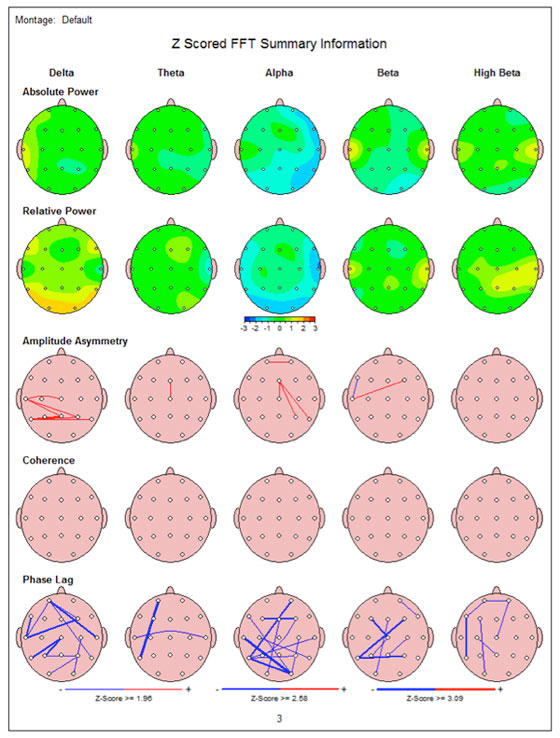An important assessment tool is an EEG brain map. It gives a snapshot picture of what’s going on in the brain. There are many types of brain maps – including MRIs, PET scans, and SPECT scans. But the EEG map provides the best information for neurofeedback training.
The EEG patterns from an individual’s brain are compared with a “normative database” of other individual EEGs. These databases compare the individual’s EEG pattern with a group of carefully-selected, normal, healthy people in a similar age group.
The qEEG report helps identify where significant differences exist between the person being tested and the normative group. There are hundreds, even thousands, of measurements. Much like a blood test, the clinician must know how to interpret the test results, including which are significant and relate to the client’s problems.
An EEG brain map helps identify where the brain has specific problems – and helps target the kind of interventions. This information is sometimes used to help suggest appropriate medications. For neurofeedback, it provides a guide to where to train. Each area of the brain plays an important role. If one or more areas of the brain is running too slowly or too fast, it causes problems such as attention, emotional control, mood, or behavior.
Another measure is called “coherence”. Coherence measures how well-coordinated the communication is between one area of the brain and another. There is constant communication between different areas of the brain. If two areas are communicating too little or too much, it can interfere with the efficiency of the brain. A qEEG brain map is one of the few tools that helps assess coherence. More research and a growing body of clinician experience suggest training coherence with neurofeedback may be an important component to an efficient brain.

Example of QEEG Report
